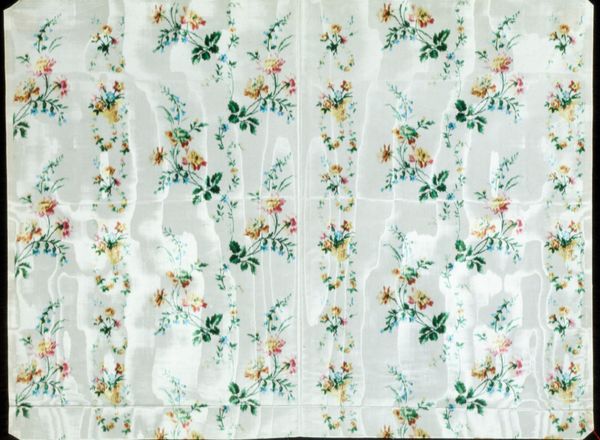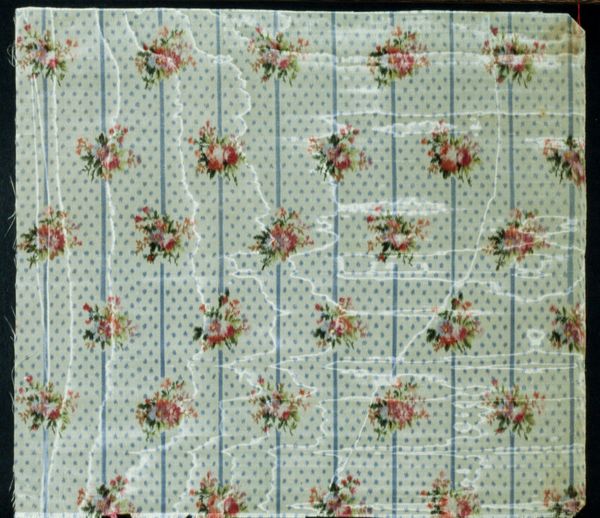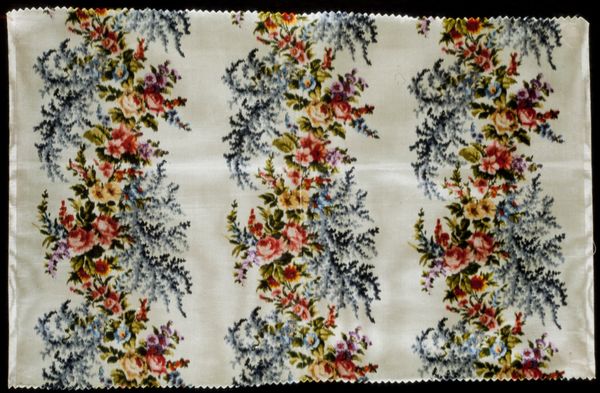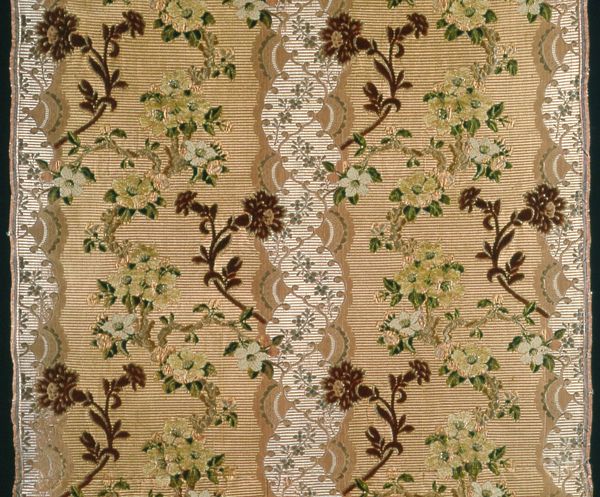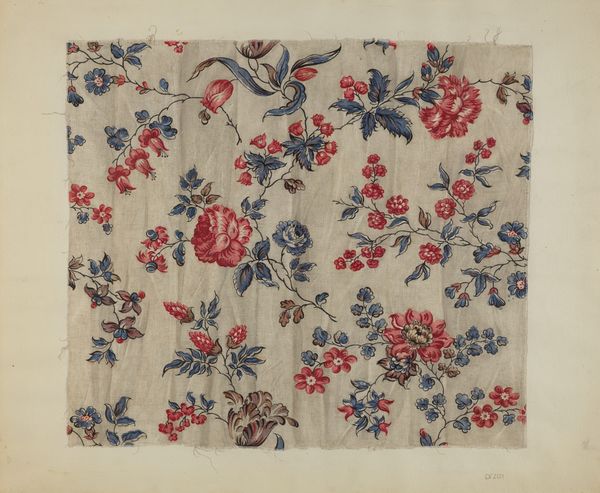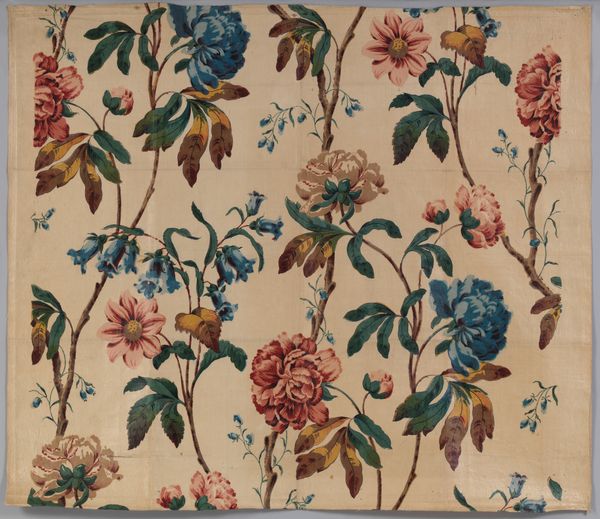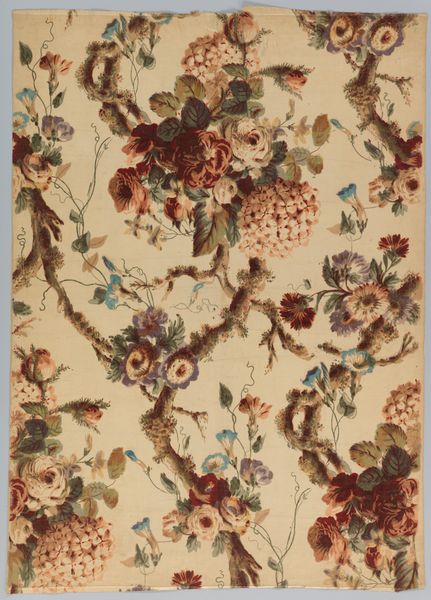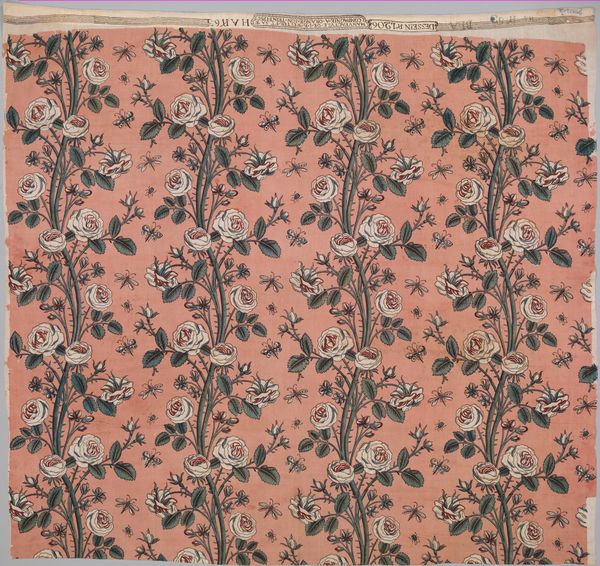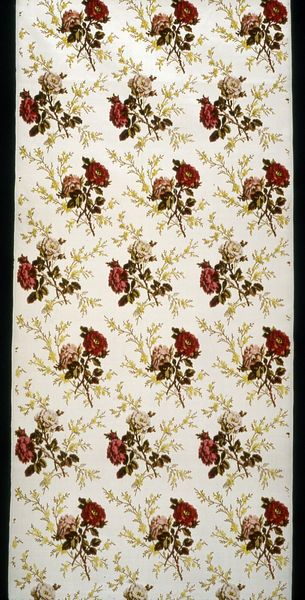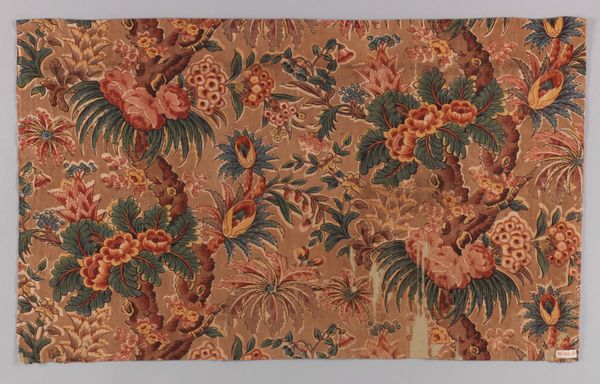
weaving, textile
#
organic
#
pattern
#
weaving
#
textile
#
flower
#
fashion and textile design
#
organic pattern
Dimensions: 150.4 × 163.9 cm (59 1/4 × 64 1/2 in.) Weft repeat: 108.5 cm (42 3/4 in.)
Copyright: Public Domain
Editor: Here we have a textile, titled “Panel,” created sometime between 1860 and 1880, origin is by Mathevon et Bouvard, and it now lives at the Art Institute of Chicago. I am immediately struck by the detailed floral patterns, all those pinks, yellows, and reds set against a cream ground! I wonder about the story behind its creation – how do you interpret this piece, considering its materiality and context? Curator: As a materialist, my gaze immediately falls upon the process of production. This "Panel" is more than a decorative surface; it represents labor, industrial practices, and the consumption patterns of its time. The very act of weaving transforms raw material into something culturally meaningful. The question then becomes: what were the conditions of the labor that produced this textile? Was it mass-produced for the burgeoning middle class, or a bespoke commission for the elite? Editor: That’s fascinating. I hadn't considered the socio-economic factors tied to its production. Are there any clues in the textile itself that might point to the manufacturing process or its intended market? Curator: Absolutely. Look closely at the uniformity of the pattern. Does it suggest mechanized printing, or hand-crafted block printing? And what about the quality of the fabric itself? Is it a finely woven silk, indicative of luxury, or a coarser cotton, suggesting wider accessibility? These material details reveal the forces of production and consumption at play, blurring the lines between art and craft. Understanding the supply chain offers profound insight into cultural values in post-Industrial Revolution era society. Editor: I see what you mean. By examining the materials and production methods, we can unravel a much larger story about labor, class, and consumerism in the 19th century. Thanks for sharing these new insights. Curator: Indeed. And remember, every thread tells a story.
Comments
No comments
Be the first to comment and join the conversation on the ultimate creative platform.
